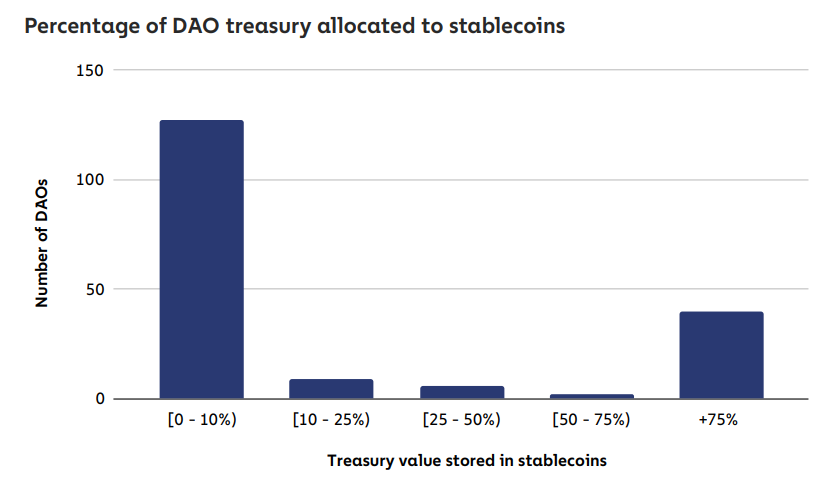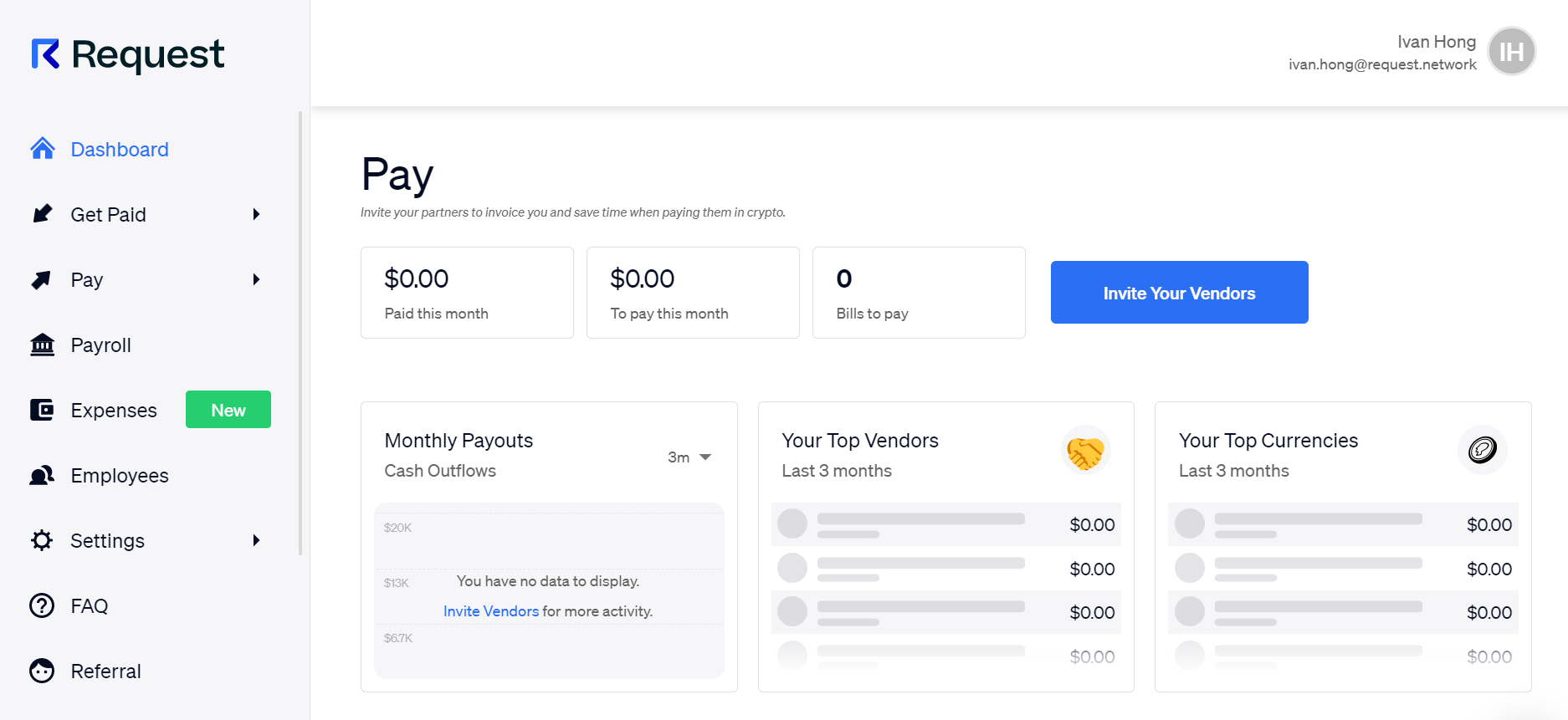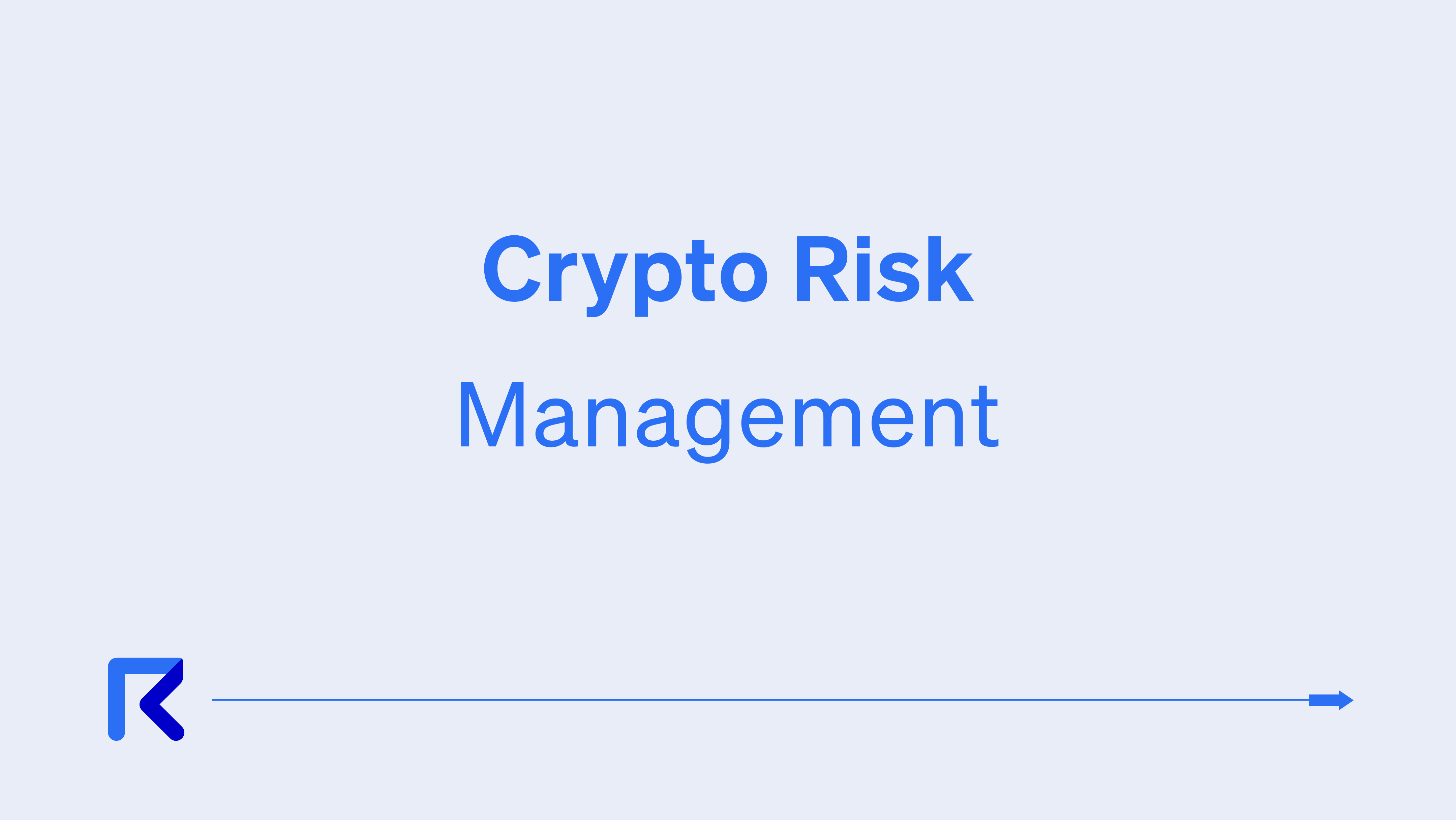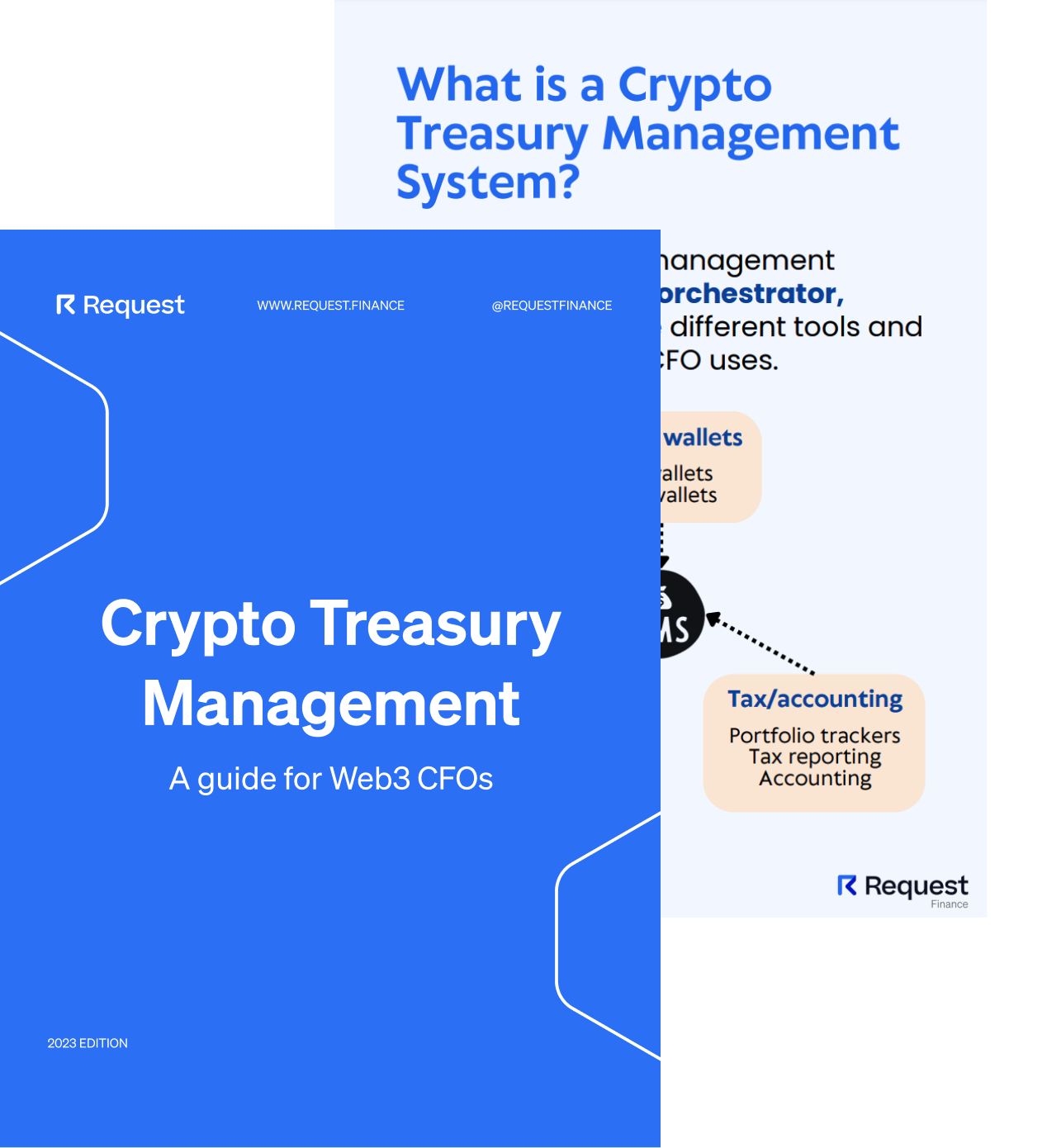If money is to organizations what blood is to our bodies, liquidity management is about ensuring that there is sufficient blood in the system, and that it flows efficiently.
Ensuring liquidity is the primary goal of good crypto treasury management. Especially in bear markets, when token prices and company valuations tank, the distinction between liquidity and solvency becomes sharper.
Solvency is about whether the value of your assets equal or exceed your liabilities. Liquidity is whether or not you have the cash (or equivalents) available to pay your dues to employees, suppliers, lenders and shareholders.
Liquidity management is sometimes referred to as “cash management” for this reason. Despite Satoshi’s original vision, most crypto assets today are not treated as cash, or cash equivalents. Hasu et. al. describe this problem in detail in their 2021 piece, “A New Mental Model for Defi Treasuries”. They argue that native governance tokens should not be viewed as part of a DAO’s treasury (although given recent innovations in the DAO tooling space, this may be changing - more on that later).
With the exception of ecosystem grants or rewards to investors, the lion’s share of an organization's expenses usually cannot be paid for in highly volatile tokens, or equity. According to data from over 2,000 crypto companies using the Request Finance app, of over $770 million in crypto payroll, expenses, and invoices paid since January 2021, an estimated 60% was in USD-stablecoins.

Despite this, many crypto treasuries are not diversified, particularly among DAOs. A study from Chainalysis published in June 2022, found that a shocking 85% of DAOs store their entire treasury in a single crypto asset — typically their native governance token. Among those who do hold stablecoins, the majority hold 10% or less of their treasury in stablecoins.

Private equity valuations, or token prices don’t matter if you can’t pay your bills with them. Apple cannot pay its salaries and factories in AAPL stock. Starbucks cannot procure its coffee beans with Starbucks gift cards. Even multinational casinos like Las Vegas Sands cannot settle their utility bills in poker chips.
Similarly, DAOs and crypto companies should ensure that their treasury has sufficient liquidity, in the form of high-quality stablecoins, or fiat in bank accounts. This ensures that teams can cover their operating expenses for potentially prolonged periods. Especially during a “crypto winter” where finding sources of funding can be challenging.
A guide to crypto treasury management published by a16z crypto offers some possible explanations behind the reluctance for DAOs to diversify their treasury into cash, or cash equivalents:
“Some projects may be reluctant to sell crypto for fiat currency or stablecoins out of a concern that it sends a negative signal to the market.”
But unless DAO contributors and suppliers are willing to continue accepting payment in a plummeting governance token during a crypto crash, its operations would likely grind to a halt for prolonged periods. While there are better and worse ways of conducting token liquidations, ceasing operations would arguably be a greater negative signal, than the perceived dumping of a governance token.
But there’s a complication here. Selling native governance tokens isn’t always straightforward. Because DAOs and protocols are generally the largest holders of their own native governance token, even a sale that represents a small percentage of their treasury could have crippling ramifications. Just a 2% treasury sale could incur as much as 95% slippage in some DAO tokens, not to mention the negative pricing pressure that would result due to an order book imbalance.
Current solutions that exist involve private swaps (e.g. Dragonfly & Lido), OTC transactions (most common practice in TradFi as well), hedging, or simply selling into a bull market - similar to what Aragon did. The downside of many of these solutions are that they’re not scalable and are often very dependent on market conditions. Several solutions are currently on their way to market to help solve this issue.
For instance, Fyde is a new protocol that allows DAOs to gain diversification, liquidity, and yield whilst still being able to keep their native governance rights. DAOs can deposit their native governance tokens into a pool which follows very strict risk and concentration controls. Depositors will then receive the $TRSY token, which is pegged to the pool. If they wish to keep their native governance rights, they receive $stTRSY instead.
Through this mechanism, depositors can gain immediate diversification on their treasuries in a risk controlled manner, as well as liquidity since they can now sell the $TRSY token instead of their native governance token. Bonding curves exist on the backend to ensure liquidity for the $TRSY token across market conditions. Depositors will receive yield as well from some of the pool assets (e.g. stablecoins, ETH, wBTC) that are staked. Through Fyde, DAOs can convert their illiquid governance tokens into working capital that can be redeployed into growing the business.
There’s a better way.
Fast, Compliant, Scalable.
Your Finance Ops HQ, ready when you are.
Budgeting & forecasting
Actionable insights:
1. Build a financial model of expenses and revenue (by sources & currency denomination)
2. Estimate net cash burn, and runway in months
3. Regularly maintain monthly cash/stablecoin balances to hit a target cash ratio of >1
4. Run sensitivity analyses, and plan for actions to be taken in scenarios where certain thresholds are crossed
Just as monitoring a person’s vitals are a key part of a health screening, financial models are key to monitoring an organization’s financial health. It provides transparency into the operating state of the organization, and enables better decision making. Large, complex organizations like MakerDAO have pioneered such practices.
The first step in ensuring liquidity is budgeting & forecasting. The aims are to understand: (i) what your organization’s key spending categories and revenue sources are each month, (ii) what form of payments they are to be received, or made in.
Good data is the foundation of any financial model. As they say, “garbage in, garbage out”. In order to build, and maintain a reliable financial model for your organization, you will need data on your organization’s crypto payments history. Using crypto payments apps like Request Finance can help you consolidate all your crypto cash flows in a single dashboard. Crypto payments data like invoices, payroll, or expenses can be categorized into different spend categories, and can be easily exported to any bookkeeping software like Xero.

This financial model will help to establish what your organization’s monthly “net burn” is, expenses net of revenue sources. In most cases, this net burn will be a negative number. More cash is flowing out than coming in each month. This liquidity shortfall typically has to be met by drawing down on an organization’s savings, or reserves.
From here, you can forecast what your organization’s runway is before your monthly expenses burn through your fuel reserves. But runway can often be a misleading measure of liquidity, especially for DAOs or companies with treasuries composed of thinly-traded, highly volatile tokens. The Chainalysis State of Web3 Report noted that the average DAO with assets over $1 million suffered a maximum drawdown of 51% over 2021, compared to Bitcoin’s drawdown of 72%.
To more accurately monitor a crypto organization’s liquidity, you can also monitor traditional measures of liquidity commonly used in TradFi, like the cash ratio.
The cash ratio is a more conservative measure of liquidity that calculates an organization’s runway (in years) - assuming you can only pay your bills with the cash or stablecoins in your crypto treasury.
A simple example of a financial model for a hypothetical DAO is included below:
The denomination of expenses is particularly critical. The guide to crypto treasury management published by a16z crypto explains:
“In addition to maintaining near-term expenses in cash, projects should also ensure they match assets and liabilities by currency. In other words, if liabilities are denominated in USD, then a corresponding amount of liquid assets should also be denominated in USD. This is particularly relevant for companies or DAOs who hold crypto assets but have expenses denominated in dollars”.
In the above example, there is a huge mismatch in the currency denomination between the DAO’s assets and its liabilities. The DAO incurs a net burn each month of 555,000 USDC, of which, 99.9% is payable in USDC. However, just 16.7% of its treasury is in USDC. This means that its current burn rate of 18.5 months could fluctuate dangerously, depending on the volatility of the XYZ:USDC exchange rate.
In the worst case scenario, if a hack sends XYZ’s token price to zero tomorrow, the DAO would have just 9 months of runway before it cannot pay its bills. At that point, if it cannot convince everyone to switch to accepting payments in a now-worthless XYZ instead of USDC, it will cease to be a going concern in about half the runway originally expected. This is also why monitoring the cash ratio matters for Web3 CFOs.
In order to budget for these monthly expenses, a16z crypto further recommends:
“To avoid having to sell depreciated assets in a down market, teams should ensure they are regularly converting assets into the appropriate currency to cover ongoing operating expenses… Always have what you need on hand”.
Apart from the exposure of an organization’s treasury to exchange rate volatility, other variables to watch out for in this financial model are planned, or unforeseen (i) increases in expenses, and (ii) fluctuations in revenue sources.
The former tends to happen when times are good, and marketing or headcount related expenses pick up. But the latter tends to fall far faster in a downturn, leaving an organization with less runway than anticipated.
For instance, many crypto exchanges aggressively expanded their headcount and marketing spending during the last bull run leading up to 2022. But they quickly found themselves staring down dramatically shorter runways, stranded with a higher cost base, while revenue from trading fees fell off a cliff during the collapse.
To account for these vicissitudes, web3 CFOs should also run sensitivity analyses on their budgeting and forecast models, and plan for actions to be taken in scenarios where certain thresholds are crossed.
These thresholds can be measured in various ways like relative changes in crypto asset prices, or percentage changes in either revenue or expenses. The goal is to be able for Web3 CFOs to say, for example:
“For each % change in the token price (or any other variable) in our financial model, our runway (or liquidity ratio) falls by 5%. So if the token price rises by 2% or more, we should conduct a token sale (or other intervention) to mitigate that risk”.
We will explore this in greater detail under the topic of risk management.
Crypto Payments
Actionable insights:
1. Understand your organization’s key revenue models, and the corresponding receivables collections methods like:
a. Invoicing
b. Subscriptions
C. Checkout
2. Use the appropriate crypto payments tools to:
a. simplify and automate manual crypto AR/AP workflows
b. enable easy financial reporting for accounting, audit, tax, and AML
c. reduce risks from human error and fraud
d. enhance crypto cash flows
e. reduce transaction costs (e.g. “gas” fees)
Liquidity management is not just about planning for, and ensuring that your organization has sufficient cash balances to meet monthly expenses.
It also involves actually managing the different types of crypto payments identified in your crypto cash flow model. Part of managing the liquidity of your organization's crypto treasury is accounts receivable and accounts payable, which control the timing of those cash flows.
Accounts receivable (AR) are the sum of payments due to you, which must be collected as part of your revenue operations. Accounts payable (AP) are payments you owe to partners, users, employees, contractors, suppliers, or investors, which must be disbursed.
AP and AR is an important part of a Web3 CFO’s treasury operations. Knowing who is paid, how often, and in what tokens or chains allows Web3 CFOs to see just where cost savings can be realized in their accounts payable.
Accounts receivable can often be streamlined to improve revenue collection, which has a more direct impact on cash flow. Done right, crypto AR/AP can help to increase the working capital and liquidity of a DAO, Foundation, or crypto company.

Broadly speaking, the two main categories of crypto payments involved in treasury operations include (i) expenses disbursements for AP, and (ii) revenue collections for AR (Table "Crypto payment categories and denominations"). As noted earlier, these crypto payments can come in a variety of different token types and currencies as well.
1. Collections for AR
The goal of AR is to be as efficient as possible in collecting revenues due to the organization. In simple terms - how to get paid in crypto, on time and in full.
Most crypto project teams have revenue streams that come from in-app fees like trading fees from exchanges, or other smart contract-based apps that automatically disburse rewards into crypto wallets of token holders, or liquidity providers.
In such cases, AR collections are automated, and the primary concern of Web3 CFOs is ensuring that they are well-documented in the accounts.
However, there are also a growing number of companies that provide goods or services, and accept payment in stablecoins or other cryptocurrencies. Examples include e-commerce merchants, SaaS tools, digital content platforms, and professional services providers that serve DAOs and other crypto-native organizations. These include smart contract audit firms, marketing, media and creative agencies, as well as accounting, audit, and legal advisors that accept crypto payments.
For the latter category of revenue models, collection of receivables typically come in three forms: (i) invoices, (ii) subscriptions, (iii) checkouts. Depending on what your organization’s revenue models look like, different crypto payments tools may be more suited to each different method of collecting receivables (Table Different method of collecting receivables).
For instance, Request Finance is ideal for managing and sending invoices in crypto, with one of the widest range of supported blockchain payment networks, stablecoins and cryptocurrency options. Payment methods like streaming, and supporting features like automated email payment reminders can help to speed up the cash collection cycle. Features like smart contract escrow can also reduce risks from bad debt on unpaid invoices.
But if you are offering a SaaS platform, or depend on subscribers to your newsletter or data analytics tool, a solution like Suberra may be better suited to your crypto AR operations. Suberra operates on token allowances - the equivalent of direct debit authorizations in traditional finance. It allows your subscribers to provide a one-time approval for recurring payments, enabling businesses to provide subscription-based services in a hassle-free manner.
As for e-commerce checkouts, a wide range of e-commerce plugins like Coinbase Commerce are available to allow merchants, on online stores and marketplaces to easily accept crypto payments.
2. Disbursements for AP
The primary goal of AR is to be as efficient as possible in paying your dues on time, with the least cost, minimal errors, and effort or time expended. Crypto companies that still deal mostly with PDF invoices, and spreadsheets tend to take a longer time to pay invoices—and spend more time and money doing so. Best-in-class practice in AP involves improving automation and reducing the amount of errors—and work.
Another equally important objective of a DAO, Foundation, or crypto project’s AP operations is spend management. Web3 CFOs need to ensure that they are paying legitimate bills to the right wallet addresses, or reimbursing only approved expense categories.
Getting your crypto AP operations right not only saves time and money, but also helps to maintain good relationships with partners, users, employees, contractors, suppliers, and investors.
Disbursement of payables typically come in three forms: (i) invoices, (ii) payroll items, (iii) expense claims (Table Different method of collecting receivables).
There are two main challenges with crypto AR/AP operations that most DAOs, Foundations, and crypto project teams should seek to address early: (i) manual workflows, and (ii) financial reporting.
These manual processes are both laborious, and also highly prone to human error, which can cost organizations in time and money. The lack of proper documentation for crypto payments also hinders financial reporting for internal and external stakeholders.
Good data is the bedrock upon which Web3 CFOs can build financial models to monitor their organizations’ liquidity, and inform decisions. Equally important is ensuring that their crypto payments operations comply with tax, accounting, audit, or anti-money laundering regulations.

Using crypto payments apps like Request Finance can help you consolidate all your crypto cash flows in a single dashboard. Crypto payments data like invoices, payroll, or expenses can be categorized into different spend categories, and can be easily exported to any bookkeeping software like Xero.
It provides DAOs, crypto organizations and their partners an easy way to submit crypto invoices, and expense claims in a standard digital format. Dashboard reports keep track of all your crypto payouts in one place for you, and flag any issues or problems that may be present—for example, when an invoice comes from a suspicious address.
Payments and accounting are challenging for large companies that deal in crypto. Managing payroll and transaction records in crypto was an administrative headache for the team at The Sandbox.
Making manual payments to large numbers of blockchain wallet addresses, and recording the transactions took up precious time and energy from the team each month.
We really needed a way to automate payments to our employees and contractors, and easily account for the company’s crypto transactions and assets during annual financial audits.
Sebastien Borget, co-founder and COO of The Sandbox
Prior to using Request Finance, I was paying users with direct wallet transfers, and that made it difficult to track who received how much and for what services.
Like many of us do in this space, we started a separate Excel sheet (that was starting to get very long) – just to keep track of all the information around payments.
A combination of MetaMask and a spreadsheet is certainly not the most efficient way to keep financial records!
Also the laborious and painstaking process of managing payments meant it was always difficult to remunerate the team in a timely manner.
Robin Lehmann, co-founder & CEO of DataUnion









